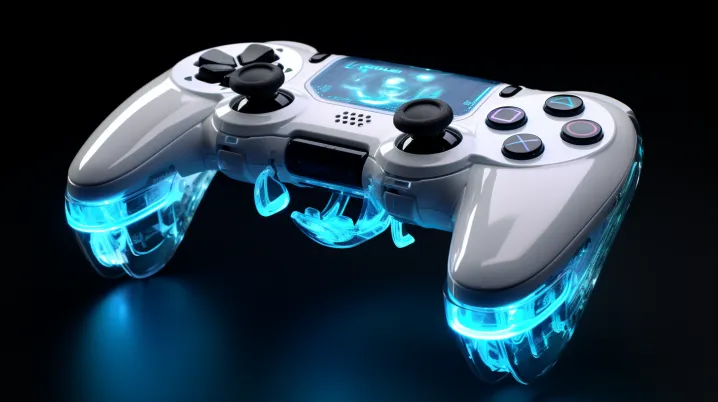Table of Contents
Unlocking AI-challenging game Sony is developing a distinctive attribute for its upcoming DualSense controllers that could assist gamers in overcoming AI-challenging game levels in games. According to a patent, artificial intelligence could be utilized to aid players in conquering difficult obstacles in video games.
Boss Battle Aid: DualSense AI

Currently, Sony provides the AI-challenging game DualSense controller in two versions: the base variant and the Edge variant, which is essentially a professional version. However, there are indications from a recent patent filing that Sony is developing a next-generation DualSense controller.
Last week, the privilege of being given the chance by Sony to evaluate the Access AI-challenging game controller. As an individual who relies on a wheelchair due to Muscular Dystrophy, I was especially enthusiastic about exploring a device that could potentially enhance my gaming experience.
Although the design incorporates numerous features that enhance accessibility compared to the AI-challenging game DualSense controller, it also has a few drawbacks or missteps that could potentially deter certain players.
Revolutionary AI-challenging game Integration
Upon examining the patent listing, it becomes apparent that the new DualSense controller from the Japanese technology giant will incorporate significant modifications. One notable alteration is the touchpad, which will now serve as a display in addition to its previous functions.
This is not merely an addition to the current design, but it will also incorporate a powerful machine learning and AI system. The upcoming DualSense controller will utilize its screen to assist players by presenting button prompts that suggest the most optimal actions.
In addition, the buttons, specifically the sticks and triggers, will illuminate to further enhance the gaming experience. Essentially, this system guarantees that players know the recommended inputs to navigate the AI-challenging game.
Adaptive Button Configuration for Enhanced Accessibility
The AI-challenging game package includes a pair of adjustable control sticks and a selection of buttons with minimal resistance. These buttons are secured in place by magnets, allowing for easy removal, rearrangement, or mixing and matching to suit individual preferences. Moreover, the buttons are designed to be sizable and robust, enabling players to press them using their fingers, palms, knuckles, or even elbows.
They are arranged in a radial pattern on a single plane, which proves advantageous for players with limited mobility or dexterity, as well as those who encounter difficulties reaching or pressing trigger buttons on a standard controller’s front.
To further personalize the controller, players can connect additional buttons and trigger switches through the Access controller’s four 3.5mm expansion ports. Furthermore, they can configure their inputs according to their preferences via the PS5 console settings.
Comparative Controller Perspectives

There are other gaming devices available in the market besides the AI-challenging game Access controller. The Xbox Adaptive Controller and the Hori Flex Controller for Nintendo Switch have been available for a few years and offer a different approach to creating an accessible gaming setup.
These Next-Gen AI controllers act as hubs that players can customize by connecting third-party buttons and switches. In contrast, the Access controller is a plug-and-play option that doesn’t necessarily require additional hardware to start playing.
This functionality has the potential to assist players in overcoming formidable adversaries or unraveling intricate puzzles. Even arduous regions can be traversed with the aid of this attribute. Such a feature has the capability to enhance the accessibility of games for novice players or individuals with specific disabilities.
PlayStation has collaborated with AbleGamers, SpecialEffect, and Stack Up, organizations dedicated to assisting gamers with disabilities, in order to address the accessibility challenges faced by this community. To ensure a comprehensive understanding of these challenges, the design and engineering team conducted prototype testing across three continents.
User-Centric Prototyping and Initial Feature Caution
This approach allowed them to gather insights from a diverse range of players. The team also prioritized providing testers with the prototypes in their own homes, as this enabled them to assess how the devices integrated with the players’ existing gaming equipment or assistive technology.
Additionally, they sought to understand how individuals who are not typically gamers, such as care workers, would interact with the device, as they may be involved in its setup and configuration.
Nevertheless, it is imperative that this feature is initially deactivated, as a prompt illuminating during gameplay can prove exasperating for certain individuals, particularly if the AI model lacks proper training and suggests erroneous actions.